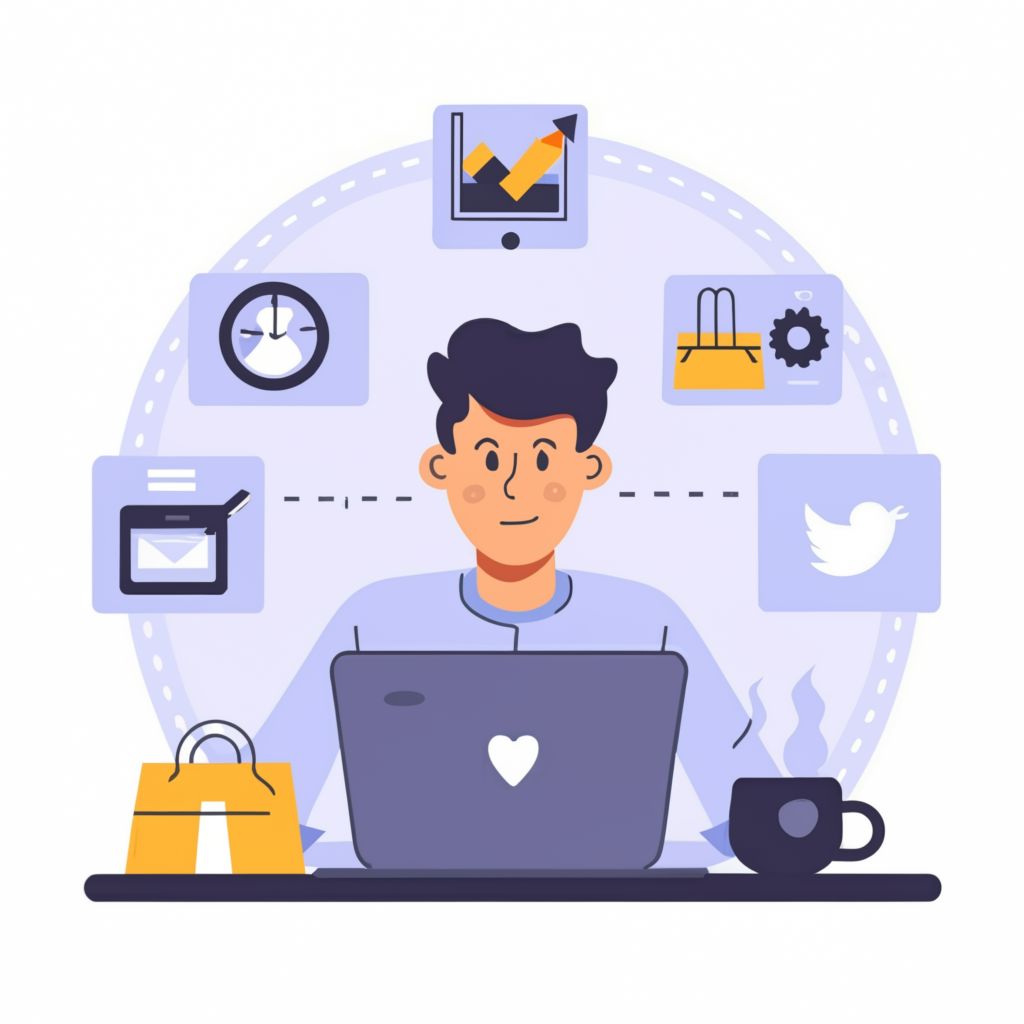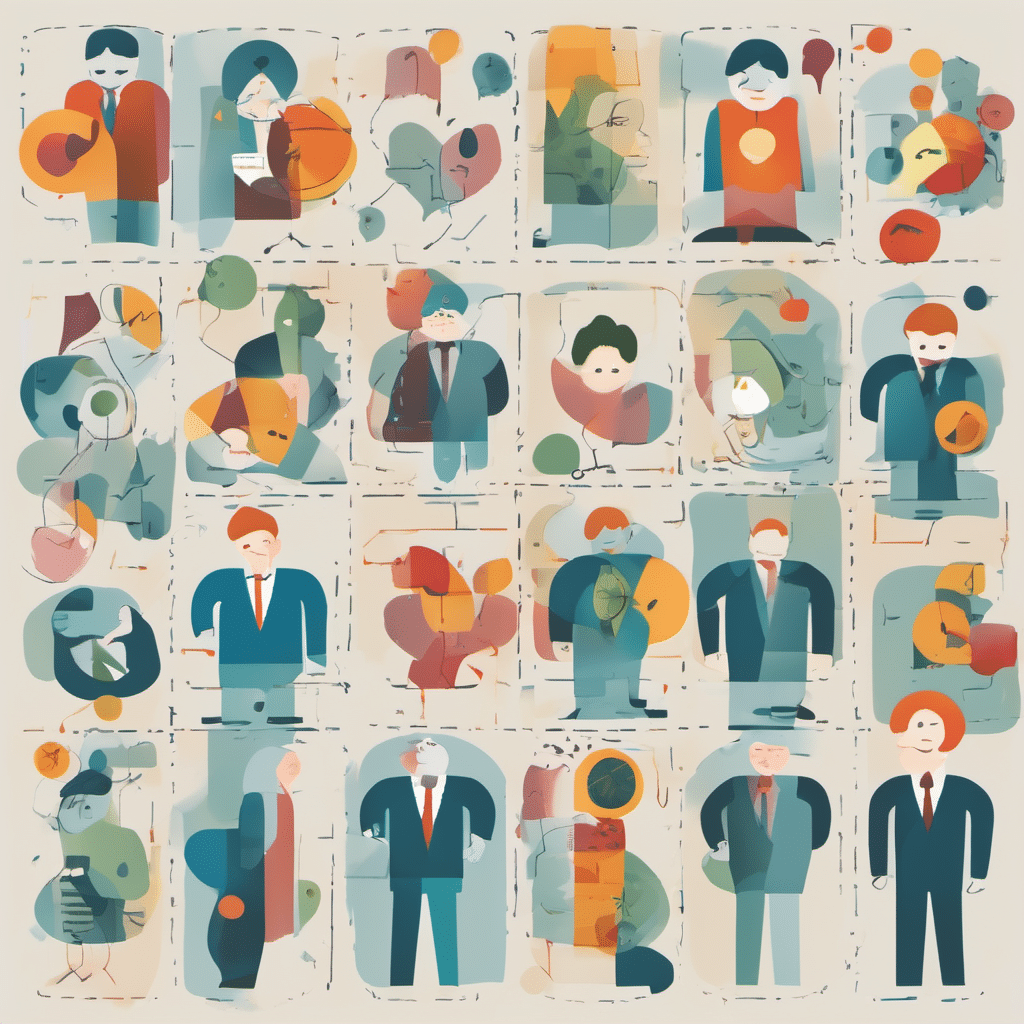Understanding customers in order to serve them better means understanding their behaviors, motivations, expectations, and needs. In this list, you’ll find the most interesting stats and trends around some of the key factors that influence purchase decisions.
This post will be updated regularly, so make sure to check back for new findings! And if you have any interesting data points to share, please let me know in the comments below.
Customer Expectations | Purchase Behavior | B2B Buying Behavior | Customer Experience | Conversational Commerce | Customer Loyalty | Other Curious Stats
Customer Expectations
- 83% of shoppers need some form of support during their online journey (E-consultancy, 2013).
- 61% say that quickly finding what they want and like is a key element of a positive shopping experience (source: SMARTASSISTANT, 2016).
- 64% of shoppers desire simplicity in the purchase process (Compare Metrics, 2014).
- 74% of online consumers get frustrated with websites that offer content which doesn’t directly relate to their needs and interests (Adobe CMO, 2015).
- 52% of shoppers feel that the majority of current websites have become overwhelming (Compare Metrics, 2014).
- Three-quarters of consumers (74%) say that the ease of browsing and searching is their number one criteria for choosing one website over another (Live Person, 2013).
- 50% of consumers are likely to switch brands if a company doesn’t anticipate their needs (Salesforce, 2017).
- 56% of consumers are willing to share data to receive faster and more convenient service (Salesforce, 2017).
- 57% of people in the US and 44% of people in the UK like technology and apps to automatically filter information for them in order to manage information overload (KPMG, 2017).
- 46% of online shoppers want more product comparisons from e-commerce sites in order to be able to find the right product (BigCommerce, 2018).
- 60% of UK consumers prefer a balance of price and service and will not accept low service levels in exchange for a lower priced product (The Institute of Customer Service, 2016).
- 64% consumers want personalized offers from retail brands (Salesforce, 2017).
- 53% of consumers name fast issue resolutions as their top demand (Geometry Global, 2014).
- When purchasing online, 71% of visitors expect help within five minutes (LivePerson, 2013).
- 77% of customers expect businesses to offer products that cater to their personal tastes (KPMG, 2017).
- 74% of consumers are frustrated when content isn’t personalized (Infosys, 2013)
- 75% of consumers expect a consistent experience wherever they engage (e.g., website, social media, mobile, in person) (Salesforce, 2017).
- 56% of consumers said that they have higher expectations for customer service now than they had a year ago. This number increases to 68% for the age range of 18-34 (Microsoft, 2016).
- 87% of customers think brands need to put more effort into providing a seamless experience (Zendesk, 2013).
Related articles:
- Are You Prepared for The 4 Types of Shoppers Coming to You?
- The 2016 Consume Expectations Report + Infographic
- The 15 Key Factors That Influence Customer Satisfaction
Purchase Behavior
- 81% of shoppers conduct online research before buying (Adweek, 2014).
- 71% of customers shop with a specific scenario, not a product in mind (Compare Metrics, 2014).
- 90% of smartphone users begin their online search without a specific brand in mind (Think With Google, 2015).
- 39% of shoppers have left a business’ website and made a purchase elsewhere because they were overwhelmed by too many options (CSA, 2016).
- 7 out of 10 shoppers will leave a product they are interested in before purchase completion (Baymard, 2017).
- One in three smartphone users have purchased from a company or brand other than the one they intended to because of information provided in the moment they needed it (Think With Google, 2015).
- Up to 40% of consumers change their minds at the point of purchase because of something they see (Psychology Today, 2017).
- 51% of shoppers will either try once or give up immediately when seeking help before an online purchase (E-consultancy, 2013).
- 57% of consumers say that ‘lack of information about product’ is their primary reason for abandoning an online purchase (Live Person, 2013).
- 63% of consumers said they’d think more positively of a brand if it gave them content that was more valuable, interesting or relevant (Rapt Media, 2016).
- 56% of global consumers are interested in using an online shop assistant that they could engage with for advice as they are browsing products online (Foresight Factory, 2018).
- The interactive and needs-based nature of Digital Advice or Guided Selling solutions is proven to have a significant impact on the bottom line: 6.4-9.7% AOV uplift, 107% CVR uplift, and 2-3x increase in qualified leads (SMARTASSISTANT, 2017).
- 74% of consumers have spent more due to good customer service (American Express, 2014).
- 80% of Gen Z customers are more likely to visit a store if it offers entertainment (JWT Intelligence, 2016).
- 15 years ago, the average consumer typically used two touch-points when buying an item and only 7% regularly used more than four. Today consumers use an average of almost six touch-points, with 50% regularly using more than four (Marketing Week, 2016).
- 85% of customers start a purchase on one device and finish it on another (Google, 2014).
- When Internet users seek information online about brands and their associated products, 62% say they use the official brand website, with 26% saying they use them “a lot” (Geometry Global, 2014).
- 56% of consumers are more likely to shop at a retailer in-store or online that recognizes them by name (CSA, 2016).
- 20% increase in simplification of the decision-making process results in a 96% increase in a customer’s likelihood to purchase, re-purchase or recommend a particular brand (CEB, 2012).
- More than half (55%) of all customer interactions typically begin online and more than a quarter now begin on mobile devices (Microsoft, 2016).
Related articles:
- How Useful Are These 7 Methods in Helping people Choose?
- What is Guided Selling and How Does it Works?
- Brand Spotlight: Trek Bicycle Cements Its Position As Most Trusted Bicycle Brand
- The Top 7 Reasons People Don’t Buy From You
- Digital is Changing Consumer Behavior. Can You Keep Up?
B2B Buying Behavior
- 57% of the purchase decision is complete before a buyer even calls a supplier (CEB, 2015).
- 67% of the buyer’s journey is now completed digitally (Sirus Decisions, 2013).
- Only 25% of buyers reveal their interest to vendors at the early stages of the journey (Demand Metric, 2014).
- Almost 90% of study participants indicated it is important to influence buyers earlier in their journey (Demand Metric, 2014).
- 61% of survey respondents agreed that the winning vendor delivered a better mix of content appropriate for each stage of the purchasing process (DemandGen Report, 2014).
- 76% of B2B buyers prefer to receive content unique to their buying stage (Marketbridge, 2013).
- 95% of buyers prefer brands that provide content throughout the buying process. (Marketbridge, 2013).
- 86% of buyers would pay more for a better customer experience (Walker, 2017).
- B2B e-commerce sales are expected to outgrow B2C sales, reaching 6.7 trillion USD by 2020 (CMS Connected, 2016).
Related articles:
- B2B Guided Selling: Accelerate and Increase B2B Sales
- B2B Sales is Changing – Here’s What You Can Do to Keep Up
- Why You Should Use Interactive Content to Improve B2B Lead Generation?
- Emotion and Information in B2B Decision Making: The New B2B Buyer
Customer Experience
- In 2016, poor customer experiences cost US businesses $68 billion, and UK businesses $48 billion (Geometry Global, 2014).
- 56% of global consumers say they have higher expectations for customer service now than they had just one year ago (Microsoft, 2017).
- 77% of US online adults say that valuing their time is the most important thing a company can do to provide them with good service (Forrester, 2015).
- 59% of 25 – 34-year-olds share poor customer experiences online (New Voice Media, 2014).
- 89% of businesses are soon expected to compete mainly on customer experience (Gartner, 2014).
- 78% of companies rate improving their omnichannel experience as ‘business critical’ (Zebra, 2017)
- Brands that have superior CX bring in 5.7 times more revenue than their competitors that lag in such efforts (Retail Customer Experience, 2017).
- By 2020, customer experience will overtake price and product and the key differentiator between brands (Walker, 2017).
- 72% of businesses say that improving the customer experience is their top priority (Forrester, 2016).
- 86% of senior-level marketers say it’s absolutely critical or very important to create a cohesive customer journey (Salesforce, 2015).
- 90% of customer experience decision-makers say that a good experience is critical to success of their business (Forrester Research, 2016).
- 54% of retailers said the customer experience is their most important area of focus (CMO, 2017).
- Companies lose more than $62 billion due to poor customer service (New Voice Media, 2016).
- Maximizing satisfaction with customer journeys has the potential not only to increase customer satisfaction by 20% but also to lift revenue by up to 15% while lowering the cost of serving customers by as much as 20% (McKinsey, 2014).
- 73% of enterprise decision-makers consider ease of interaction as one of the most important attributes of a quality customer experience (Deloitte, 2013).
- 95% of dissatisfied customers tell others about their bad experience (Zendesk, 2013).
- Customer experience leaders have more than a 16% advantage over competitors in willingness to buy, reluctance to switch brands, and likelihood to recommend (Tempkin Group, 2014).
Related articles:
- 23 CX Experts Reveal the Best Ways to Measure Customer Experience Success
- The 15 Key Factors That Influence Customer Satisfaction
- 7 Technologies to Bring Online Detail Experience Offline
- 7 Technologies to Watch: Bringing Offline Retail Experiences Online
- 3 Key Challenges of Delivering a Word-Class Customer Experience
Conversational Commerce: Chatbots & Voice Assistants
- Nearly 50% of people are now using voice search when researching products (Social Media Today, 2016).
- 19% of consumers have made a purchase through Amazon Echo or another voice assistant, and another 33% plan to do so in 2018 (Walker Sands, 2017).
- By 2020 – 30% of web browsing sessions will be done without a screen (Gartner, 2016).
- By 2020, 40% of commerce transactions will be enabled by cognitive/AI personal shoppers and conversational commerce solutions (IDC, 2017).
- By 2020, the average person will have more conversations with bots than with their spouse (Gartner, 2017).
- 67% of people expect to see/use messaging apps when talking to a business (Chatbots Magazine, 2017).
- 40% of adults now use voice search at least once per day (Branded 3, 2016).
- 1 in 5 searches on US android mobile app is a voice search (Google, 2016).
- Application growth for Amazon Alexa has been impressive – over 500% in the second half of 2016 (Voicelabs, 2017).
- 65% of people who own an Amazon Echo or Google Home can’t imagine going back to the days before they had a smart speaker (GeoMarketing, 2017).
- 42% of surveyed Amazon Echo or Google Home owners state that voice-controlled devices have become ‘essential’ to their lives (GeoMarketing, 2017).
- The number of households in the US with smart speakers has grown 49% in the last 5 months (ComScore, Nov 2017).
- 56% of online grocery shoppers use or plan to use voice-controlled smart assistant/speaker (Global Web Index, 2018).
- 1 in 4 shoppers used voice assistants in their holiday shopping during the 2017 season (CTA, 2017).
- 48% of voice-activated speaker owners would like to receive ‘personalized tips and information to make my life easier’ from brands via their devices (Google, 2018).
- 38% of voice-activated speaker owners would like to receive customer support from brands via their devices (Google, 2018).
- 41% of people who own a voice-activated speaker say it feels like talking to a friend or another person (Google, 2018).
- 35% of consumers want more businesses to adopt chatbots (Ubisend, 2017).
- 22% of UK consumers would like to turn to chatbots in order to receive recommendations based on their needs, 14% would like to receive advice about trends and products (Ubisend, 2017).
- 47% of users are open to purchasing items through a chatbot (Hubspot).
Related articles:
- From CES 2018: Assistance Is The New Battleground For Growth
- From E-Commerce to Conversational Commerce: Chatbots and Virtual Assistants
- Good Bots. Bad Bot. Building Effective Chatbots for Customer Service
Customer Loyalty
- 51% of US consumers are loyal to brands that interact with them through their preferred channels of communication (Accenture, 2016).
- AOV for repeat customers is twice as high as for first-time customers (McKinsey, 2013).
- 43% of consumers believe trust is the most important factor when choosing a retailer (PwC, 2017).
- 41% of consumers say they trust companies that educate them about product features and benefits (KPMG, 2017).
- Companies with the strongest omnichannel customer engagement strategies retain an average of 89% of their customers, as compared to 33% for companies with weak omnichannel strategies (Aberdeen, 2013).
- A positive online experience is the leading factor in visitors completing their purchase (84%), buying from the company again (84%) and trusting the brand (84%) (Live Person, 2013).
Related articles:
- For Tips to Make Your Customers Feel Unique and Win Their Loyalty
- Customer Loyalty: Do Your Customers Love You?
Other curious stats
- 41% of people feel totally overwhelmed with information and avoid it if they can (KPMG, 2017).
- There is more media created in 60 seconds than can be consumed in a lifetime (KPMG, 2017).
- 61% of companies find it difficult to adapt to changing markets (PwC, 2017).
Subscribe to our FREE newsletter and get new articles straight to your inbox!
Join over 70,000 people who want to stay inspired.




